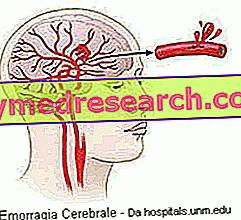Related articles: African trypanosomiasis
Definition
African trypanosomiasis is a parasitic disease widespread especially in sub-Saharan Africa. The infestation is caused by protozoa belonging to the genus Trypanosoma (in particular, T. brucei gambiense and T. brucei rhodesiense ); these parasites are transmitted mostly by the bite of an infected tsè-tsè (genus glossina). Occasionally, African trypanosomiasis can be contracted through blood transfusion.
If left untreated, sleeping sickness is deadly.
Most common symptoms and signs *
- Asthenia
- Ataxia
- Cachexia
- Coma
- Difficulty concentrating
- Mood disorders
- Articolar pains
- Edema
- Erythema
- Temperature
- hyperphagia
- Swollen lymph nodes
- Headache
- Meningitis
- Nodule
- papules
- Loss of coordination of movements
- itch
- Joint stiffness
- Drowsiness
- splenomegaly
- Confusional state
- Tremors
- Skin Ulcers
Further indications
In the first phase of the disease, trypanosome multiplies in the subcutaneous tissues, in the blood system and in the lymphatic system. This involves several symptoms: intermittent fever, headache, joint pain, itching and transient swelling. Often, generalized lymphadenopathy occurs.
At skin level characteristic skin lesions arise: at the point of inoculation a papule develops first, which then evolves into a dark red, hard and painful nodule (tripanosomal sifiloma).
Later, the parasite crosses the blood-brain barrier and invades the central nervous system (neurological phase). Therefore, symptoms such as persistent headache, fatigue, apathy, daytime sleepiness, inability to concentrate, confusion, personality changes, tremor and ataxia occur.
In the gambiense form (caused by T. brucei gambiense ), the involvement of the central nervous system occurs months or several years after the onset of the disease. In the rhodesiense form (caused by T. brucei rhodesiense ), however, the course is acute, the invasion of the CNS often occurs in a few weeks and, in the absence of treatment, death can occur within a few months.
The diagnosis is based on the identification of trypanosomes in the lymph node aspirate or in the blood, through the use of serological tests. The determination of the progression stage of the disease involves the examination of the cerebral spinal fluid.
The type of treatment depends on the stage of the disease and the infectious subspecies. In general, trypanosomiasis therapy may involve the use of suramin, pentamidine, melarsoprol or eflornithine. Untreated patients die from coma or secondary infections. Prevention involves avoiding endemic areas and protecting oneself against tsè-tsè flies: wear long-sleeved clothes and pants up to the ankles and use insect repellents based on DEET (dietiltoluamide).



